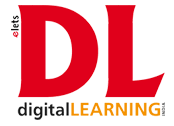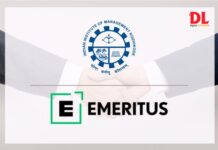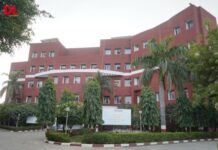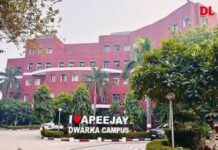
The small city of Tumakuru in Karnataka is setting a big example in the field of education through its innovative and inclusive initiatives. Under the dynamic leadership of Ashwija B.V., MD & CEO, Tumakuru Smart City Limited (TSCL), the city has redefined educational access and quality. From modernizing Anganwadi centers to creating vibrant spaces like the City Central Library and the Science Theme Park, Tumakuru blends technology, infrastructure, and community participation to foster an enriched learning ecosystem. In this exclusive conversation with Elets News Network (ENN), Ashwija B.V. sheds light on her vision for education in Tumakuru, discussing strategies that are bridging gaps, empowering communities, and steering the city toward a future of equitable and innovative education.
As an administrator and leader, how do you perceive the role of governance in shaping the future of education in India?
Quality education is the foundation of societal growth and individual empowerment. Governance plays a crucial role in ensuring every child has access to impactful learning. Building robust infrastructure is key, with facilities like modern libraries, science labs, and interactive classrooms fostering holistic development. For instance, transforming Empress Karnataka Public School created a vibrant learning environment that inspires students and teachers alike.
Leveraging technology bridges gaps in resources and reach. Digital classrooms, online libraries, and smart learning tools prepare students for a tech-driven future while enhancing learning experiences. Equally critical is enhancing teacher capacity through regular training, which ensures lessons remain effective and engaging.
Finally, community and stakeholder engagement are vital. Involving parents, alumni, and local networks fosters shared responsibility, ensuring educational initiatives are sustainable and impactful. Governance, for me, is about creating systems where learning thrives, empowering students and educators to reach their full potential.
Inclusivity in education remains a pressing goal. What measures do you believe are critical to ensure quality education reaches the most underserved communities?
Inclusivity is crucial for building an equitable society. At TSCL, we have implemented impactful initiatives addressing barriers to education. We prioritized early childhood education by modernizing Anganwadi centers, equipping them with child-friendly spaces, learning tools, and essential health facilities. This encourages attendance and lays a strong foundation for young learners.
Projects like the Science Theme Park and smart classrooms make learning engaging and accessible. Interactive experiences help students, especially those from marginalized backgrounds, grasp complex concepts effectively.
To further inclusivity, we have designed libraries with digital resources and sections catering to visually impaired students. These spaces also support competitive exam preparation, broadening career opportunities for students from all walks of life.
Teacher empowerment is another focus. Training educators to use modern tools ensures high-quality instruction across socio-economic backgrounds. Practical learning programs, like the NCC Firing Simulator, boost students’ confidence and career readiness. By combining technology, infrastructure, and community involvement, we break barriers and provide every student with tools for success.
Tumakuru’s projects like the City Central Library and Science Theme Park are inspiring. How have these initiatives redefined the learning experience for students in the region?
Tumakuru’s initiatives, such as the City Central Library and the Science Theme Park, have truly transformed the learning experience for students in our region. As the CEO of TSCL, I am proud to share how these projects are redefining education.
The City Central Library is a hub for modern learning and community engagement. Its digital library offers vast resources, including e-books and journals, promoting self-paced learning. A dedicated Braille section ensures inclusivity, empowering visually impaired students, while the competitive exam section supports aspirants aiming for prestigious careers. Events in the state-of-theart auditorium connect students to broader educational experiences.
The Science Theme Park, featuring 26 hands-on models like Archimedes’ Screw and DNA structures, transforms complex scientific concepts into interactive experiences. Guided explanations enhance understanding and spark curiosity, fostering a love for STEM among students.
These projects extend learning beyond classrooms, inspiring critical thinking and preparing students to excel in a modern world.
Transforming vision into action often requires collaboration across multiple stakeholders. What strategies do you use to align teams and drive large-scale educational projects?
I believe that collaboration is the cornerstone of any large-scale educational project. Aligning teams and stakeholders requires a combination of clear communication, strategic planning, and shared accountability. Here are some strategies we have successfully implemented:
Unified Vision: Every project begins with a clear vision aligned with TSCL’s goals and community needs. For instance, when upgrading Anganwadi centers, we emphasized their societal impact.
Early Stakeholder Engagement: Educators, government bodies, and community leaders are involved from the start, ensuring diverse perspectives and buy-in.
Clear Communication: Regular updates and transparent progress tracking address challenges proactively, whether for setting up smart classrooms or creating inclusive spaces.
Empowering Teams: We provide training and resources, like equipping teachers to use digital tools and guides for Science Theme Park exhibits.
Scalable Models: Projects like the NCC Firing Simulator are designed for replication, encouraging long-term sustainability.
Measuring and Celebrating Success: Tracking metrics like increased attendance or engagement highlights the impact, reinforcing collective commitment. By fostering a culture of shared purpose, we have turned vision into actionable outcomes that leave lasting impacts.
Could you share a particularly challenging moment in your journey of transforming educational visions into actionable outcomes and how you overcame it?
Transforming Tumakuru’s Anganwadi centers was one of the most challenging tasks. Many were dilapidated, lacking basic facilities, and located in rented spaces unfit for children. With 131 centers to rebuild or refurbish, securing funding, aligning stakeholders, and maintaining ongoing services posed significant hurdles. Resistance to change from community members added to the complexity.
We overcame these challenges through meticulous planning and community engagement. Transparent communication helped build trust, while involving local leaders addressed concerns. New centers were designed with child-friendly infrastructure, clean water, and educational illustrations. Refurbished spaces prioritized safety and functionality, transforming them into welcoming environments.
These efforts led to a 5% rise in attendance and a 15% increase in student enthusiasm. Today, these centers serve as a model for how targeted investments in early education can uplift entire communities. This experience taught me the power of collaboration and the importance of aligning long-term goals with immediate needs.
Also Read: BHU Legacy Shaping Generations of Leaders and Innovators
What advice would you offer to young professionals and administrators aspiring to make a significant impact in the education sector?
My advice is simple.
• Define a Clear Vision: Understand the challenges you aim to address and align your goals with community needs.
• Leverage Technology: Use tools like smart classrooms to enhance learning and engagement.
• Prioritize Inclusivity: Focus on underserved communities, creating spaces like Braille libraries and modernized Anganwadi centers.
• Collaborate: Engage educators, local authorities, and stakeholders for collective ownership.
• Measure and Adapt: Track impact metrics to refine strategies and demonstrate results.
• Stay Persistent: Challenges are inevitable, but adaptability and persistence will guide you through. By combining innovation, inclusivity, and community focus, young professionals can drive meaningful change and create educational systems that empower students and communities alike.





















